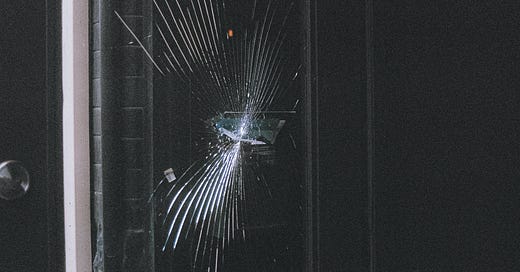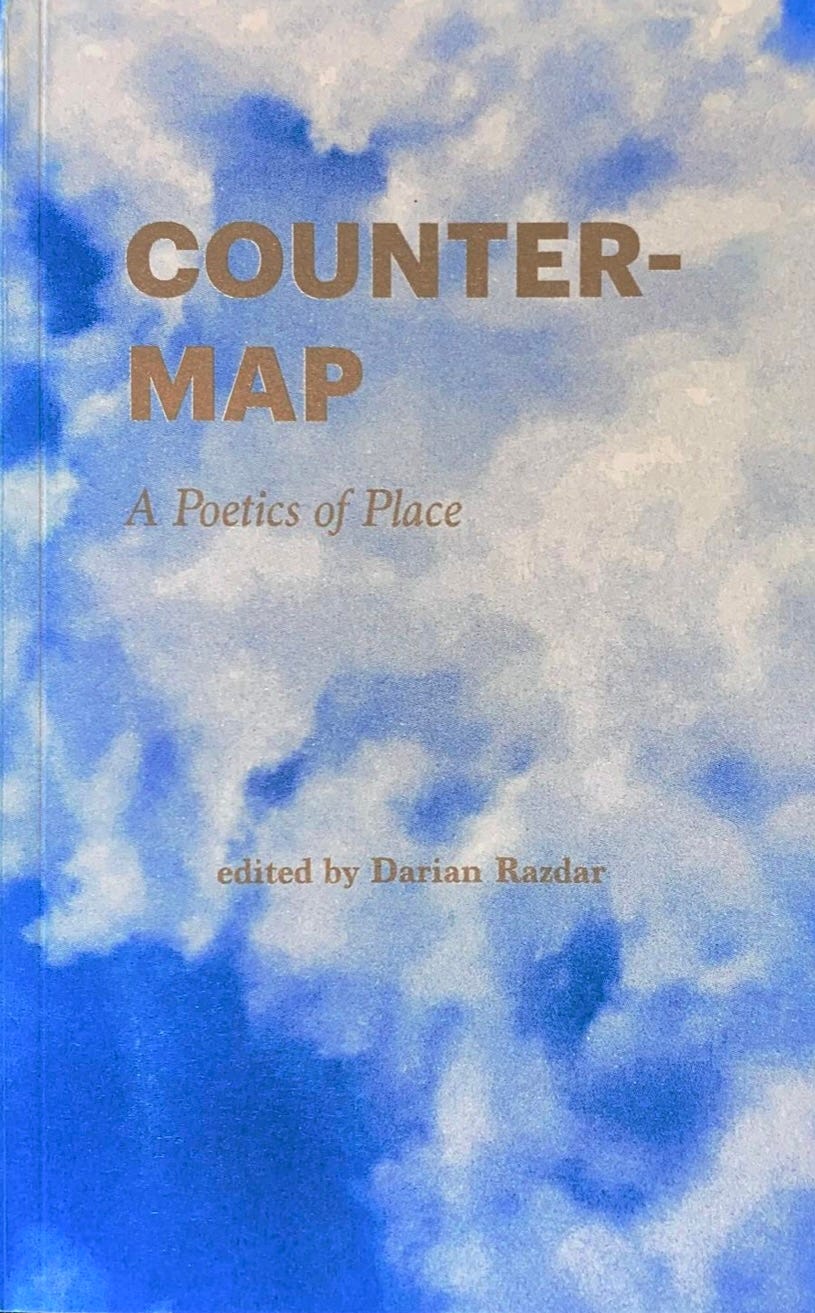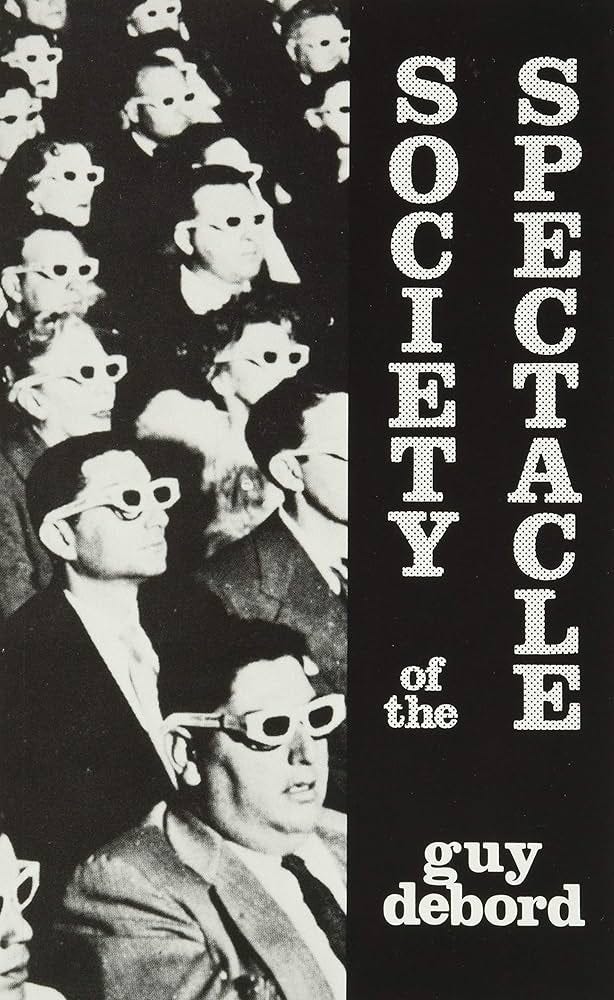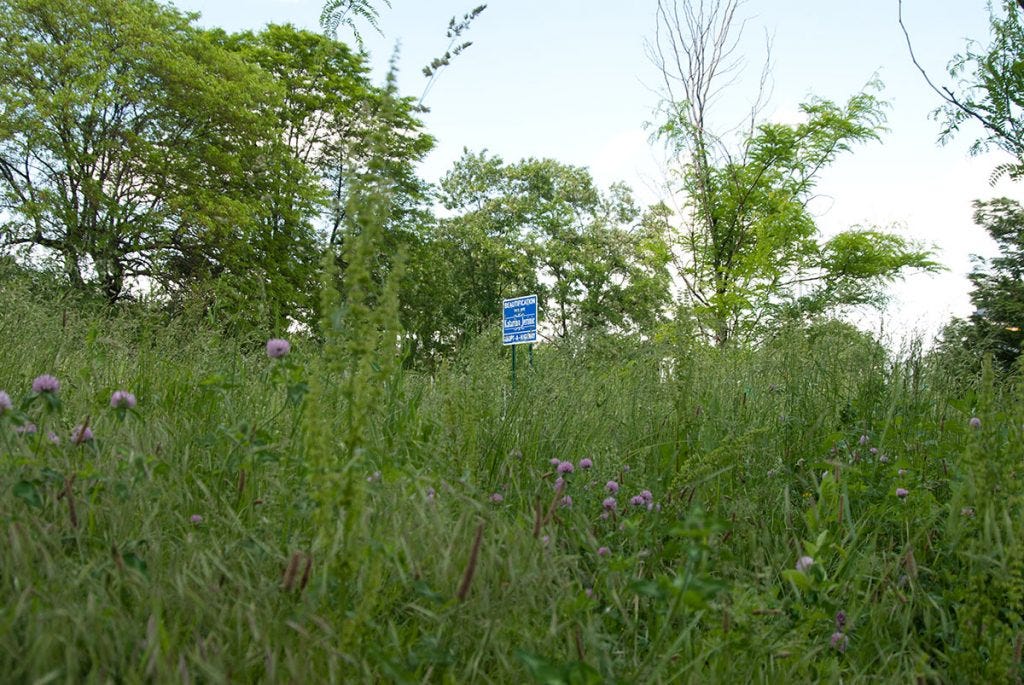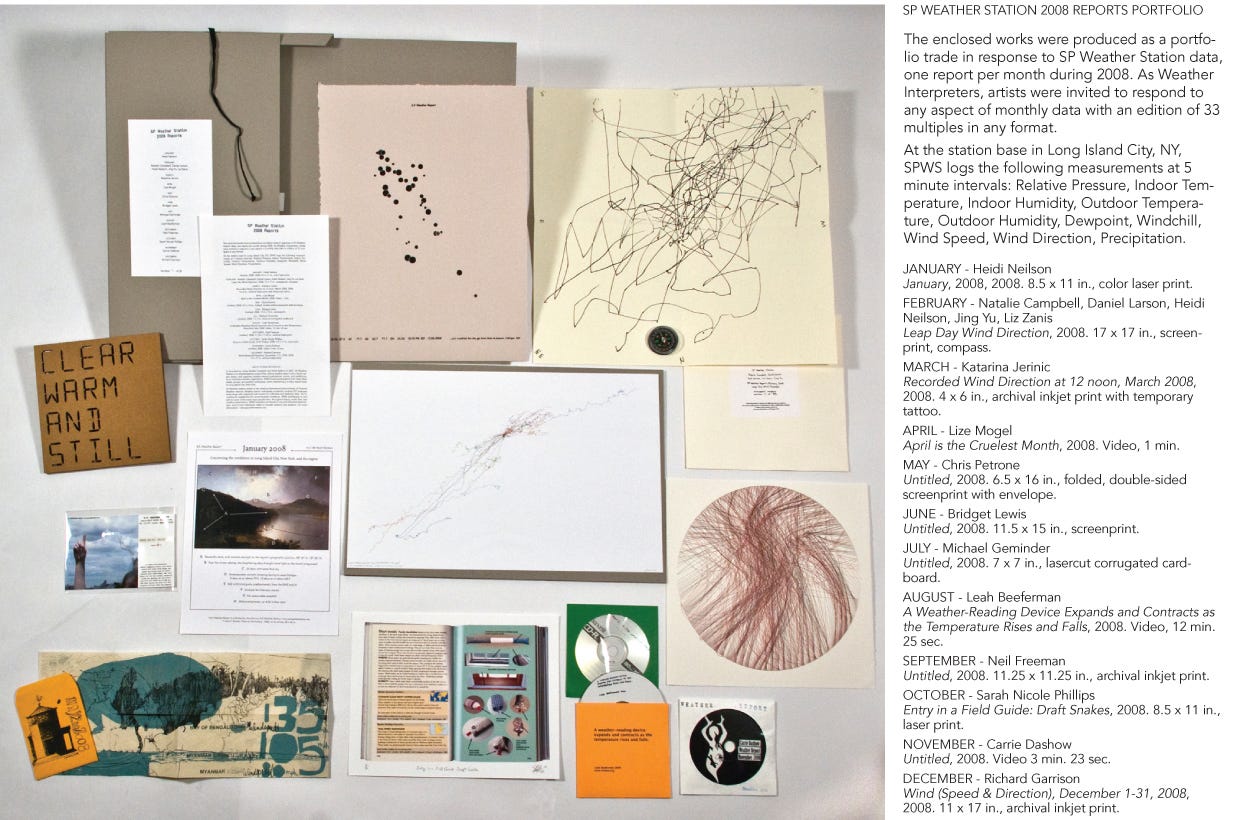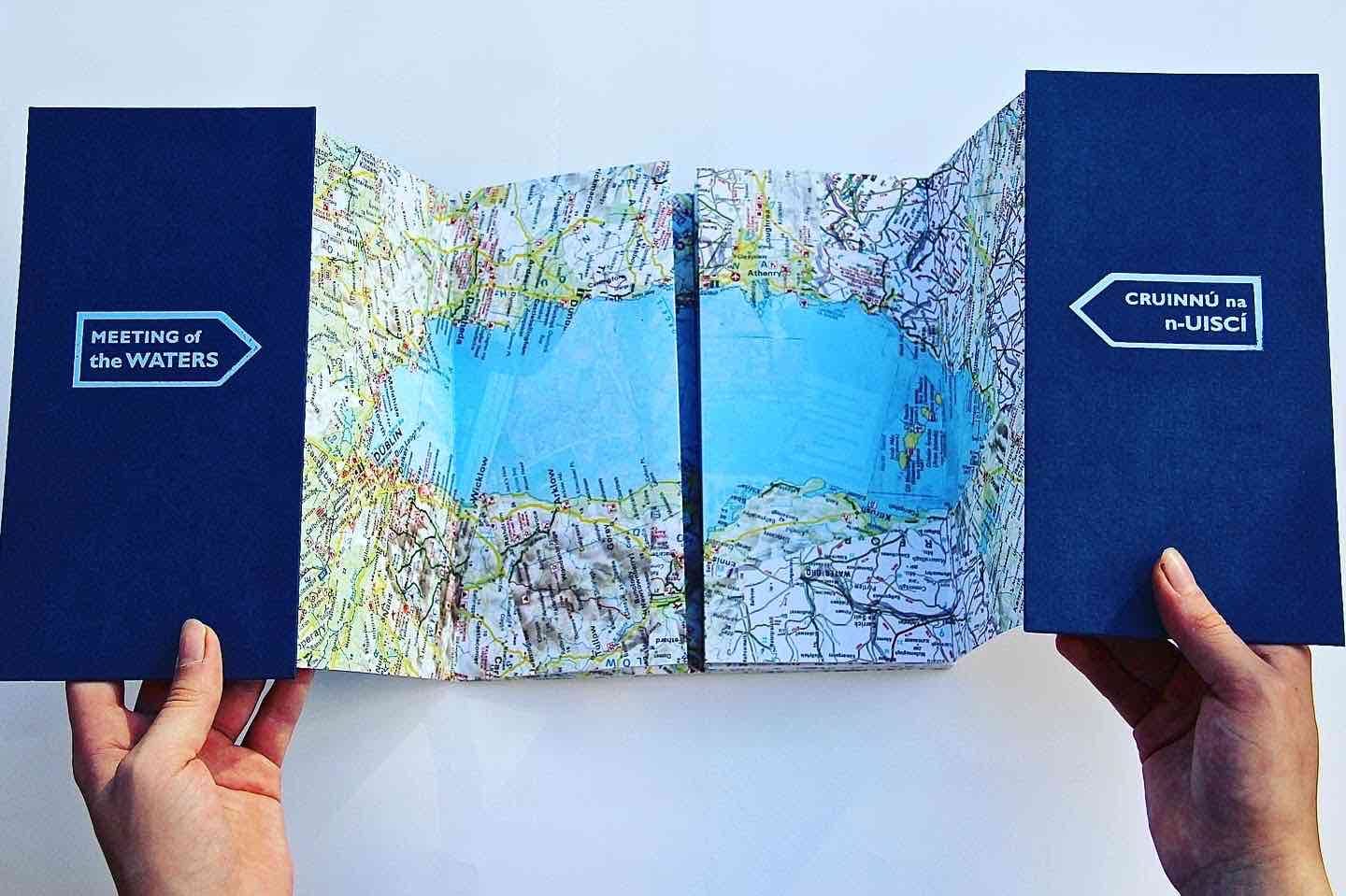Poetics of Place - Episode 5
Détournement, Society of the Spectacle, and Diverting the Cartographic Gaze
This is dispatch number five from an eight-week long workshop that I am facilitating called Poetics of Place. This a studio-workshop-research practice that I began in 2022 by transforming a workshop I facilitated from 2017 to 2022 called Community Power Mapping.
I held the first Poetics of Place workshop on 09 July 2022 in my former Christie Street, Toronto home, and (totally coincidentally) the second PoP workshop I facilitated was held at Mildred’s Lane during the first annual Queer Ecologies Research Collective gathering on 09 July 2023. If you’re interested in learning more about the background of this project, and the book I made with participants’ contributions, take a look at this page on my website. If you’re interested in ordering one of the books in the future, please express it here : ) Once I receive interest in 50 copies, we will print the second edition.
Last week’s session, five out of eight, we focused on the idea of détournement, a practice proposed by the Situationist International (SI) in the 1950s and 60s aimed at rerouting the messages of popular culture and consumerism for social change. Détournement is often translated into english as “highjacking” or “rerouting;” however, I prefer the more literal and uneasy translation “deturning.” Merriam Webster’s dictionary tells me that this word is obsolete and redirects me to “divert,” and I think how this is a deturn in itself.
The Situationists were an international group of artists and intellectuals active from 1957 to 1972. Sibling of the Surrealist and Dadaist movements of the 20th century, the Situationists were compelled to use avant garde art and theory to combat the particular brand of capaitalism advancing its way through Western Europe post-World War II. SI co-instigator Guy Debord called this system the “the society of the spectacle,” and published a book in 1967 under the same title (english pdf here!).
To understand what it means to deturn, we need to understand what the spectacle is. Rather than venture to explain what Debord meant by “society of the spectacle,” I want to leave you with excerpts from the 1st chapter “Separation Perfected” (translated by Ken Knabb) and let you come to your own conclusions:
What we’re doing by deturning the spectacle is turning the upside-down rightside-up: making the moment of the false a moment of the true. To me this sounds very sexy, but I know that it reads quite abstract, so I want to give you a few examples.
When détournement was presented to me in university, I received the quintessential example: culture jamming. Popularized the 1990’s anti-/alter-globalization movement, culture jamming takes the images and slogans of mass market advertising and turns them on their heads. As a form of anti-consumerist communication, it’s an ironic and satirical practice that was particularly successful in raising awareness of the health impacts of the fast food industry and GMOs. However, I personally find most culture jamming tacky and too on-the-nose. I’ll point you to Barbara Kruger’s protest art as a more developed example of culture jamming and a good essay about this practice for those who’d like to read more.
Here are three contemporary examples of deturning that I encountered while researching for my my Center for Book Arts fellowship. More than culture jamming, they speak to my creative appetite for the strange, enigmatic, and marvellous specifically as it relates to environment, ecology, and a poetics of place.
Katarina Jerinic’s Beautification This Site
From 2012 to 2016, New York artist Katarina Jerinic deturned a relegated, forgotten, and polluted triangle of grass in the middle of a busy Brooklyn street into a critique of neoliberal urban land management and a satirical exercise in community land stewardship. The artist summarized it best herself: “Beautification This Site centers on a leftover piece of the landscape I acquired through the Department of Transportation’s Adopt-A-Highway Program. It’s located at exit 30 off the Brooklyn-Queens Expressway, carved out between a highway exit ramp and a congested Brooklyn street. Part earthwork, part self-assigned residency, the project calls attention to the land itself and ways it is shaped by urban bureaucratic and natural forces, passers-by, and my own endless efforts picking up trash, pulling weeds, and cutting the grass.”
Heidi Neilson and Natalie Campbell’s SP Weather Station
Another durational project, Neilson and Campbell installed a DIY atmospheric monitoring system on the roof of Flux Factory in Long Island City in 2008. Each month for 5 years, the duo invited an artist to ‘report’ on the weather data collected by the station’s devices and published the year’s of twelve reports in a five annual collections. The result? Eclectic assortments of creative responses to the phenomenon of weather that amount to a rich artistic intervention in the spectacle of weather reporting. By deturning usual meteorological expectations, the SP Weather Station asks us to consider what weather is, how we measure it, and why it matters.
Déirdre Kelly’s Meeting of the Waters
Venice-based Irish artist Déirdre Kelly uses a classic Situationist technique to deturn the map: collage. By cutting up and rearranging a map of Ireland, Kelly turns the coasts of the island nation outside-in, and gives us the image of a territory surrounding an inland sea. The artist plays with the edge between water and land to get us to read the map differently, asking her viewers to be open to new geographical meanings, relating back to Korzybski’s map-territory relation, which I discussed back in Episode 2.
All three of these examples have something in common: they deturn the cartographic gaze from the top-down declaration of truth (Google Map’s or the government’s Mexico City is the same as the Mexico City I encounter on the street, thus the map is true and defines the territory it represents) to a bottom-up reckoning of what it even means to perceive the world(s) around us (the map is different from territory). These artists present an important move for a practice of Poetics of Place: a move that allows us to play with how we represent places meaningful to us without the need to create a single truth, but rather to create new forms and visions of place.

